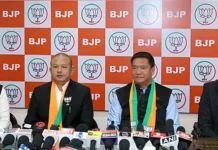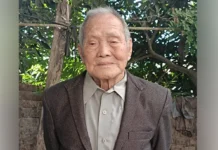Flights Of Fantasy
[ M Panging Pao ]
Many Arunachalee old-timers recall the 1962 Sino-India conflict with fear and anger. The Chinese forces entered deep into Arunachal Pradesh along many axes like Taksing-Limeking, Mechuka/Manigong-Tato, Gelling-Tuting, Kibithoo-Walong axes and the main Tawang-Bomdila-Rupa axis. Many readers are not aware of the fierce battles fought by our brave soldiers. One such story is the story of sepoy Kanshi Ram.
Sepoy Kanshi Ram hailed from Mandi district of Himachal Pradesh and followed the footsteps of his father and joined the Punjab Regiment.
During the 1962 Sino-India war, the 9 Punjab was deployed in the forward areas north of Tawang in Arunachal Pradesh. The myth of ‘Hindi-Chini bhai bhai’ went for a toss in the morning hours of 10 October, 1962, when a Chinese infantry regiment rolled down south of the Thagla ridge and attacked the Indian Army defences on the south bank of the Namka Chu river. The Indian troops holding the defences were ill-equipped, ill-clothed and ill-acclimatized to fight at heights ranging from 15,000-20,000 feet in the extreme cold climate.
On 10 October, the post of Tseng Jong was attacked by approximately 500 Chinese soldiers. Disregarding the heavy enemy fire, sepoy Kanshi Ram effectively covered the right approach to his post with accurate fire from his light machine gun (LMG). Kanshi Ram was injured during the fierce battle. Although seriously injured, Kanshi Ram did not waver and kept inflicting heavy casualties on the advancing enemy, making them retreat. After giving him first aid and attending to his wounds, his company commander wanted him to be evacuated since his injuries were serious and he was bleeding profusely, but Kanshi refused evacuation. He tied a bandage on his wound tightly to stop the blood from coming out and remained at his post and continued to fire onto the enemy. His post was once again attacked by another wave of the Chinese infantry, this time with greater intensity of small arms fire. Despite his injury, sepoy Kanshi Ram kept firing the LMG. Despite suffering casualties, the enemy waves kept on advancing and closing in on his post.
A Chinese officer along with 40 troops approached close to Kanshi Ram’s position and launched a fierce attack. Sepoy Kanshi Ram jumped out of his trench, grappled with the officer, killed him and snatched his automatic rifle. Thereafter, sepoy Kanshi Ram used the Chinese automatic weapon against the Chinese themselves, inflicting heavy casualties on the Chinese troops. That was the first Chinese weapon captured by the 7 Indian Infantry Brigade and effectively used against the Chinese themselves during the war.
For his exceptional courage, tenacity and gallantry during the war, sepoy Kanshi Ram was awarded the nation’s second highest gallantry award – Maha Vir Chakra. Later, sepoy Kanshi Ram reached the rank of subedar in the army. Salute to sepoy Kanshi Ram! (The contributor is retired Group Captain, Indian Air Force)




